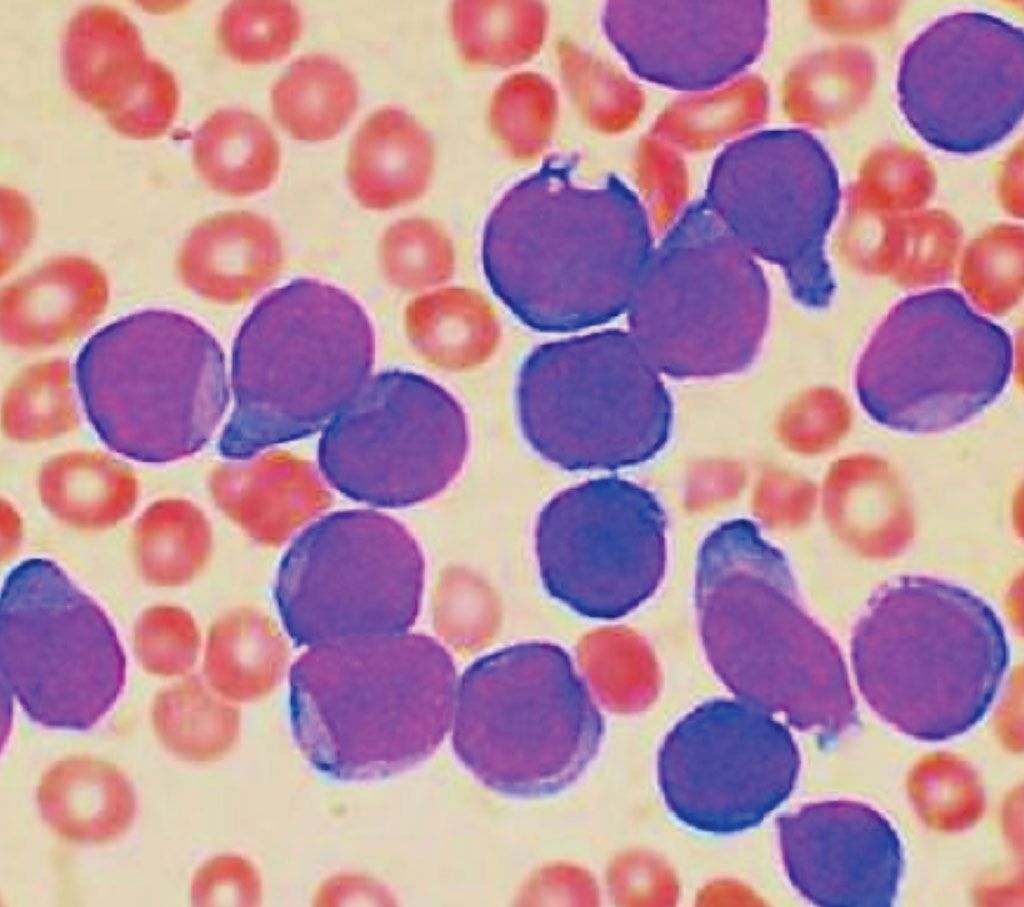Genetic Testing Identifies High-Risk Subtype of Acute Lymphoblastic Leukemia
By LabMedica International staff writers
Posted on 09 Dec 2016
Acute lymphoblastic leukemia (ALL) is less common in adults than in children, but adults are far less likely to survive. Adults make up about 40% of the estimated 6,590 new cases of ALL identified annually in the USA.Posted on 09 Dec 2016
A high-risk subtype of acute lymphoblastic leukemia first identified in children is highly prevalent in adults with ALL and is associated with a poor outcome, but affected patients may benefit from treatment with available medications.

Image: A stained bone marrow aspirate smear from a patient with precursor B-cell acute lymphoblastic leukemia (Photo courtesy of VashiDonsk).
A large team of scientists collaborating with their colleagues at the St. Jude Children's Research Hospital (Memphis, TN, USA) studied leukemia samples from banked material obtained at diagnosis from 909 patients with precursor B-cell ALL (B-ALL), 798 of whom had suitable material for genomic analysis. The cohort was divided into the following three age groups: 344 young adults age 21 to 39 years; 304 adults, age 40 to 59 years, and 150 older adults, age 60 to 86 years.
Gene expression profiling was performed at 798 ribonucleic acid (RNA) samples using either U133 Plus 2.0 microarrays or a 15-gene Taqman quantitative reverse transcriptase polymerase chain reaction (PCR) low-density array (LDA) that identifies the Philadelphia chromosome-like (Ph-like) ALL gene signature, P2RY8-CRLF2, BCR-ABL1, ETV6-ABL1, TCF3-PBX1, and DUX4/ERG-deregulated ALL. Transcriptome sequencing (RNA-seq) was performed using the TruSeq library preparation on the HiSeq 2000 platform.
The scientists found that 194 patients, almost 25%, had the high-risk subtype Philadelphia chromosome-like ALL (Ph-like ALL). Patients with Ph-like ALL accounted for more than 20% of adults with ALL, including 27.9% of young adults, 20.4% of adults and 24.0% of older adults. Overall, patients with Ph-like ALL had an inferior 5-year event-free survival compared with patients with non–Ph-like ALL. Eleven new kinase rearrangements were identified, including four involving new kinase or cytokine receptor genes and seven involving new partners for previously identified genes. Many patients had genetic changes that suggest they may be treatable with targeted agents known as tyrosine kinase inhibitors which are already widely used to treat other types of leukemia that are common in adults.
Kathryn Roberts, PhD, the first author of the study said, “Our comprehensive sequencing showed that Ph-like ALL in adults is the most genetically diverse subtype of leukemia that has been described. Cumulatively more than 50 different chromosomal rearrangements involving 15 different kinases and cytokine receptors have been identified. In this study, we identified 11 chromosomal rearrangements that are new to Ph-like ALL.” The study was published in the November 2016 issue of the Journal of Clinical Oncology.
Related Links:
St. Jude Children's Research Hospital













